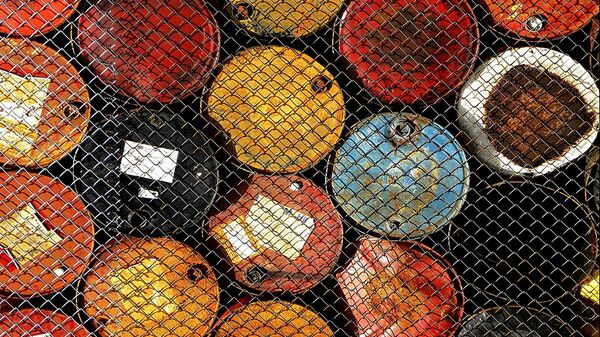Speaking to Radio Sputnik, Tippee, chief editor of PennWell's Oil & Gas Journal, explained that there are several factors behind the renewed interest in shale oil.
For one thing, he said, there's the vast scale of the potential supplies. "There's quite a volume of oil and natural gas liquids to be discovered, and investors know that. It's onshore, so you don't have the costs and problems that you have offshore."
Furthermore, the expert noted that costs have come down. "This is expensive drilling, but it's also highly technological drilling, and as producers learn to produce more efficiently in shale, to complete wells more efficiently in shale, the costs come down. The break-evens have actually become quite attractive," with distress costs (drilling contracts, costs of supplies, etc.) also down. Then there is the OPEC production cap, which according to Tippee has allowed producers to hedge production.
"As far as the 'Trump bump' is concerned, I think there is a sense across all industries in the United States right now that the very tight, strict regulation that was being imposed by the Obama administration will be relaxed. Certainly in the oil and gas industry there is a sense that producers will be able to do their work. They were running into regulations and impediments in just about every corner of their operations during the Obama administration. So there is a certain amount of Trump factor in this."
"I think more important though is the confidence that producers had that crude prices were going to stay up for a while," the expert noted, adding that here is where things get more complicated. The current price cycle is not of the traditional kind well-known by energy producers. "The unconventional resources – the shale plays change everything, and we're kind of in new territory here."
"With unconventional resources – shale, other tight oil plays, oil sands, we're talking about new resources. We're not talking the conventional reservoirs that characterized the industry before," Tippee explained. "When we get into the area of unconventional reservoirs, we're talking about exponentially more producible oil than we could consider before. That's a very important concept to wrap your mind around in this new era of unconventional resources."
For instance, the analyst recalled, "the US Energy Information Administration just projected that production this year will be up 300,000 barrels a day from 2016, and next year it'll be up 700,000 barrels a day from this year – not all from shale plays, but most of it…We haven't seen increases like that –certainly not while we were in the declines of the conventional plays."
Asked about the US potential to export its shale oil, and the effect this will have on global oil exporters, Tippee emphasized that oil's status as a fungible commodity makes any new production competition for Saudi Arabia and every other exporter.
At present, Tippee suggested, the so-called 'million dollar question' is about just what impact this rise in unconventional resource output will have on OPEC and non-OPEC exporters' behavior. "It's the phenomenon that OPEC said it worried about in 2014 when it abandoned supply management initially," its logic being that "someone else will just respond to the price elevation with new production, taking away their market share."
"That's the tension of the moment, and we just don't know [the answer]," the observer noted. "We're in new territory with unconventional resources; we don't know what the supplier response will be. By the end of this year we'll have a much clearer picture of what the potential is."
In the short term at least, Tippee stressed that prices will probably remain "lower rather than higher. A lot of the activity in the United States is predicated on $55 a barrel WTI crude oil. It might not get there; it's kind of struggled to get much above $50 a barrel, even with the relatively high compliance of the OPEC and side agreements. That's because of the response of producers to the price elevation."
"There's quite a bit of condensate, propane, butane, and even ethane now in international trade, and that competes with oil directly or indirectly, and goes up as natural gas production goes up…I think that's another reason to think that crude oil has kind of a lid on it for a while, unless we have some kind of cataclysmic loss of supply, which nobody wants to see, but that's always the potential that hangs over the market."





